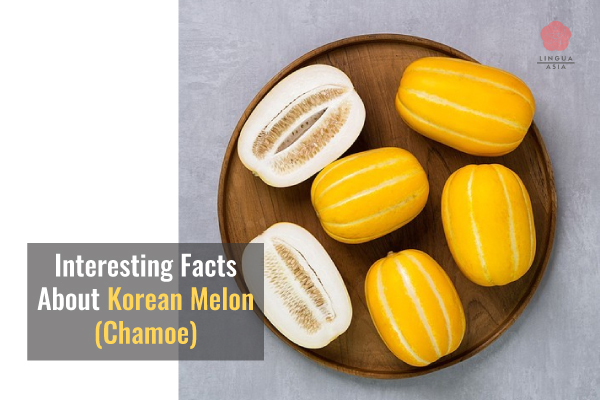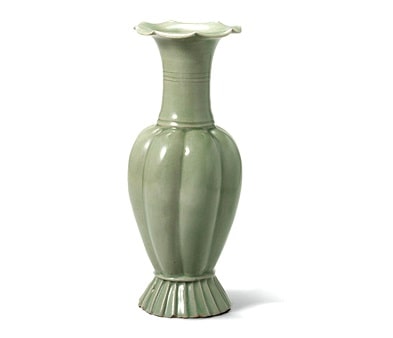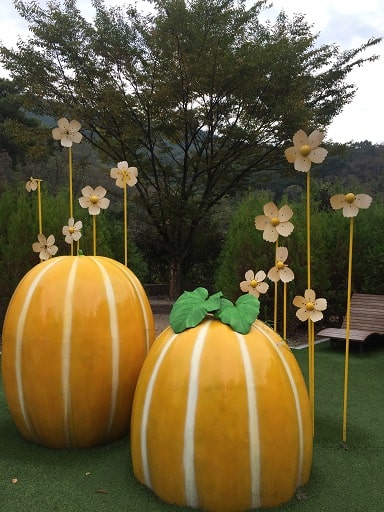Imagine a fruit that’s somewhere in between melon and cucumber!
Korean melon or chamoe tastes like cantaloupe and honeydew, but crunchier.
It’s also pretty cute with its yellow striped, oval shape.
If you see one at a Korean grocery store, it’s definitely worth trying!
Read on to find out all the interesting facts about Korean melons including whether your dog and/or cat can eat them.

Quick Summary
- Chamoe is a Korean melon.
- It’s yellow-striped and oval-shaped.
- Chamoe is a summer fruit, in season from June to August.
What is Korean melon or Chamoe?
Korean melon is also known as oriental melon or chamoe.
It may have originated from southern Sahara, Africa, then India, and spread to East Asia through the Silk Road.
It used to be cultivated in China and Japan, but now this specific type is only grown in Korea.
Chamoe is technically a member of the gourd family, so its cousins are watermelon, cucumber and pumpkin.
When you say “melon (멜론)” in Korean, it means “muskmelon”. Make sure to say “chamoe (참외)” or “cham-wae” to refer to this yellow fruit.

Little bit of History
British explorer, Isabella Bird Bishop visited the Joseon Dynasty four times between 1894 and 1897 and documented her observations in Korea and Her Neighbours. She wrote, “It’s common for 20-25 Korean melons to disappear when 3-4 Joseon people (Koreans) sit down”. This shows how much Koreans enjoy chamoe and explains how they started Mukbang.
How do you eat Korean melons?
The most common way that Koreans prepare chamoe is:
- Store in the fridge (it’s best served cold)
- Cut off both ends of chamoe
- Peel the skin off with a peeler or small knife
- Cut chamoe in half lengthways
- Slice chamoe into bite-size pieces
- Plate them
- Enjoy this healthy tasty fruit!
Can you eat Chamoe seeds?
Yes! Chamoe seeds are the sweetest (and naturally, delicious) part, while being nutritious, rich in folic acid and vitamin C.
A little insider tip is to put one in water. When chamoe floats with about 3 white lines visible, it’s fresh and safe to eat the seeds. If it sinks in water, it’s better to eat chamoe without seeds, because it means that they were damaged during cultivation. In this case, you can simply scoop seeds out after Step 3 above.
What are the nutritional value and calories of Chamoe?
Chamoe is 90% water and low in calories (about 30 kcal per 100g), making it perfect for dieting.
This fruit is also rich in vitamin C to help relieve fatigue and keep you hydrated in summer, while providing skin brightening and anti-aging effects.
Korean melon contains 450 mg of potassium per 100g for a healthy snack or dessert that prevents high blood pressure or arteriosclerosis.
Can pregnant women eat Chamoe?
Yes! Chamoe is actually great for pregnant women as it contains 132.4 μg (microgram) of folic acid per 100g. It’s one third of the recommended daily amount of folate for adults (400㎍).

When is Korean melon season?
Although it’s picked throughout the year in PVC greenhouses, chamoe is a summer fruit, in season from June to August.
It’s richer in vitamins with stronger flavors and crunchier texture then.
Chamoe also contains a lot of beta-carotene, which prevents cancer and heart disease.
Which region produces Chamoe?

Seongju-gun, Gyeongsangbuk-do is the most famous region for Chamoe.
This gun (or county) alone produces 140,000 tons a year, which is 70% of the national yield.
Seongju Rest Stop (or Service Area) even has cute chamoe statues you can take pics with.
How do you grow Korean melons?
Apparently, you can grow Korean melons or chamoe from seeds in a pot or your garden!

How much is Chamoe?
Chamoe prices fluctuate depending on the quality and season, but overall it’s considered an affordable fruit in Korea.
About 6-7 Korean melons should cost about 10,000 to 13,000 won (7-9 dollars). They’ll be a bit more expensive abroad in places like the US, UK, Canada and Australia.
But you can definitely find them wherever there’s a gathering of Koreans. It’s almost a law.
Can cats and dogs eat Korean melons?
Yes! Just remember to serve the white pulp/flesh part without the skin and seeds, and also in moderation as a snack.
If your cats or dogs have diabetes or obesity, it’s better to avoid feeding them chamoe.









